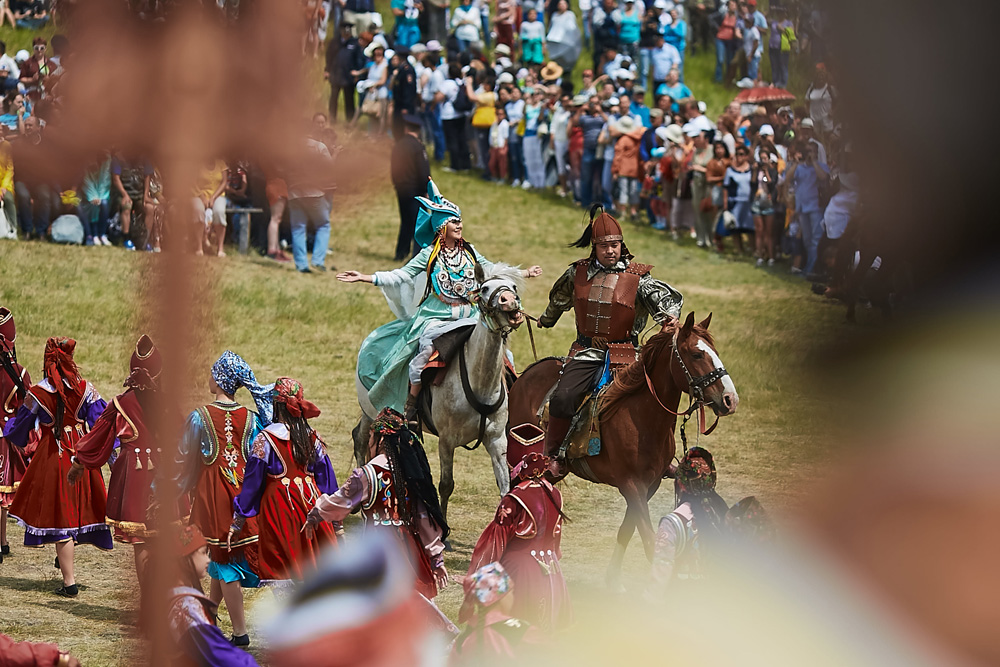
Learning the ways of the steppe: A glimpse of life in Khakassia
Mikhail MaklakovThe Yenisei (Road P257), among Siberia's most picturesque roads, stretches from Krasnoyarsk to Abakan, the capital of Khakassia and continues to the Russia-Mongolia border. If you drive slowly you can feel the quiet, calming breath of the huge Siberian steppe. Once you open the window, the car will be filled with the dry and fragrant scent of herbs, honey flowers and thyme that hide between the rocks.
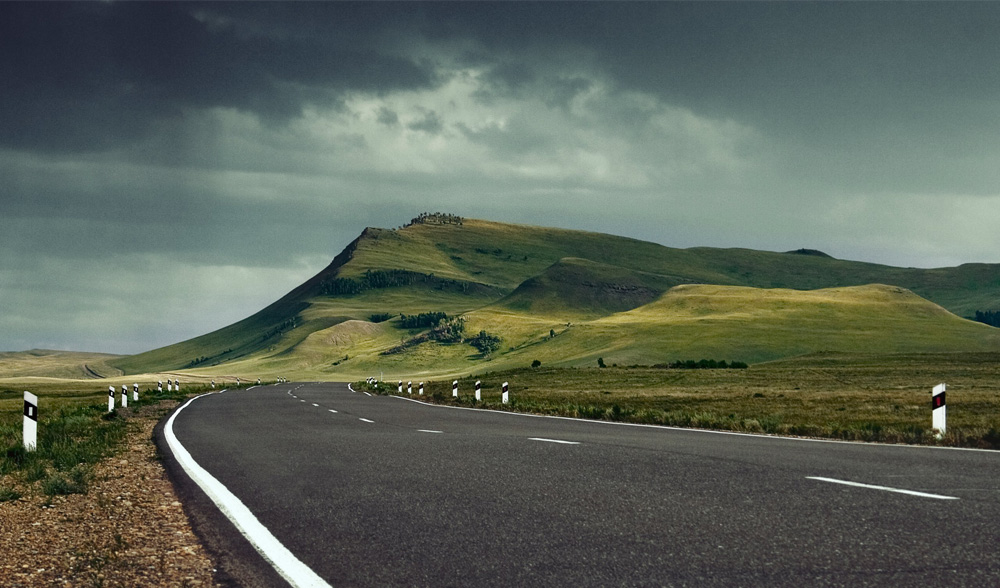 Source: Alexandr Nerozya
Source: Alexandr Nerozya
Visiting Khakassia is like receiving a holographic postcard from an enigmatic land where flat objects gain volume if you look at them from certain angles and simple things acquire both mystery and meaning. In the distance, instead of a flat surface, which is considered typical for steppes, a three-dimensional landscape becomes visible with hills carving the horizon, like woolly camels' humps. The bright ochre of stones is replaced by green wild herbs and yellow feather grass.
Travellers come here to see the remains of ancient cultures. The region counts more than 1,000 age-old steles, tombstones and petroglyphs. The neolithic carvings of Boyarskaya Pisanitsa, which depict ancient settlements with yurt-like constructions, scenes of livestock farming and food preparation, are a rare landmark for Eurasia.
The preferred destination for local residents for weekend trips is the Bolshoy Salbyksky burial mound and the Sunduki Mountain range. The range consists of five mountains that resemble five sleeping giants. Once upon a time these served as a natural observatory: Rocks, openings and holes functioned as a sun clock, while the mountain tops were used – and are still used – for shamanic rituals.
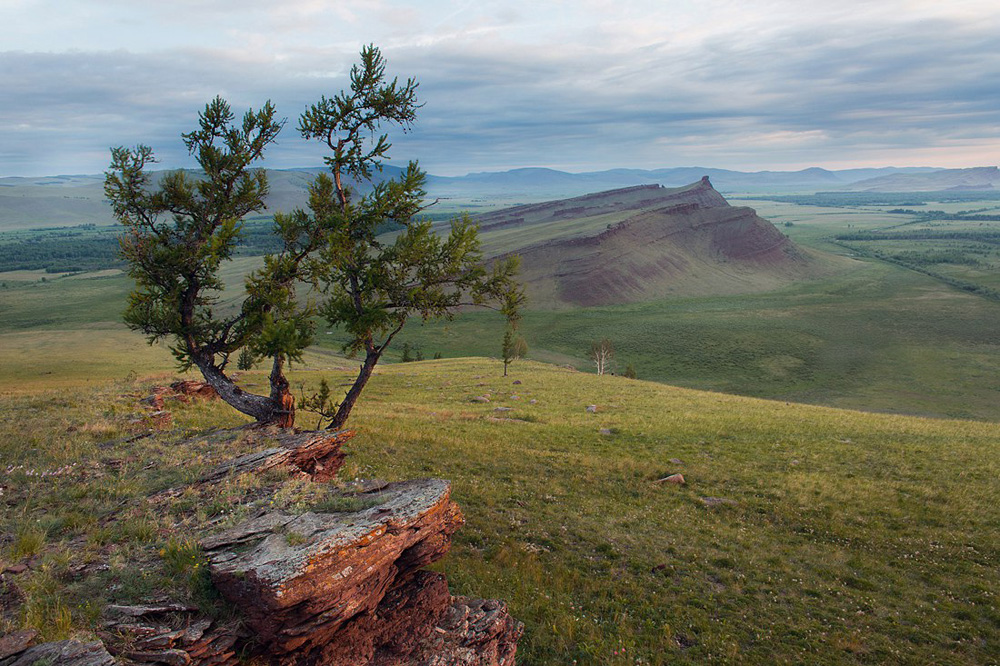 Source: Alexandr Nerozya
Source: Alexandr Nerozya
My colleague, the photographer Alexander Nerozya, was once lucky to be a witness to such a sacred act:
"Once we decided to spend the night on the top of the first mountain to take photos of the stars and the rising sun. The night was over in no time and the sunrise was majestic. The view from the top extended for many miles in all directions. At night a local guard was telling us his stories by the fire. Then a thunderstorm struck. We woke to the sounds of a shaman's drum and throaty singing: somebody was performing rites on one of the mountain tops."
Shamanism is still alive in Khakassia: As you drive through, you can see rocks or trees along the road, with coloured atlas ribbons tied to them. If you try to put something in your pocket to remind you of the steppe, like a pebble or some herbs, local people will ask you to put it back, as they consider every tiny element to be sacred and to possess special powers.
Lev Gumilev, well-known Russian author and cultural geographer, wrote that everything we see has an ethnicity to it.
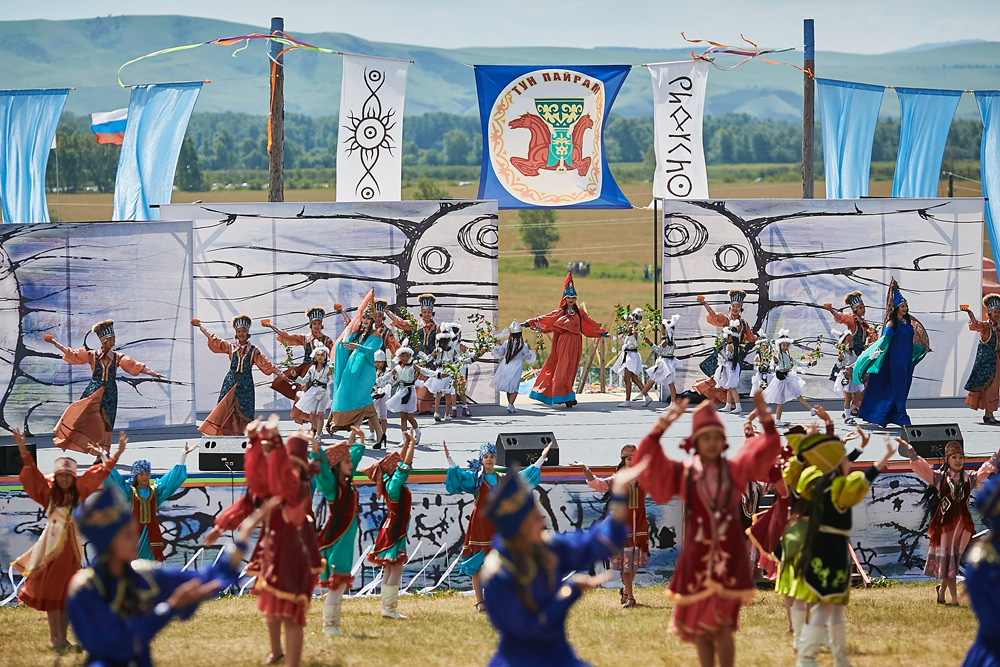 Source: Mikhail Maklakov
Source: Mikhail Maklakov
Similarly, a trip to Khakassia is a quest for a well-preserved local ethnic identity. The Khakassian calendar is a good place to start.
The spring equinox, Chyl Pazy, is one of Khakassia's most celebrated holidays. Major festivities take place in Abakan, the regional capital. It is the Khakassian New Year. On this day, the capital is full of people, from villages and small towns, who set up yurts in the main square, cook traditional dishes and sing songs in their native language.
When nomads start moving livestock to summer pastures, it is time for Tun Pairam, the feast of the first ayran, a sour dairy drink made from cow’s milk. Holiday festivities include charys (Khakassian horse racing), storytelling contests, traditional costume and archery competitions.
The cuisine of Khakassia is probably among the most conservative elements of the local culture. Traditional clothes are replaced by modern ones, old languages are forgotten and old gods are abandoned, but traditional recipes are passed on from one generation to another.
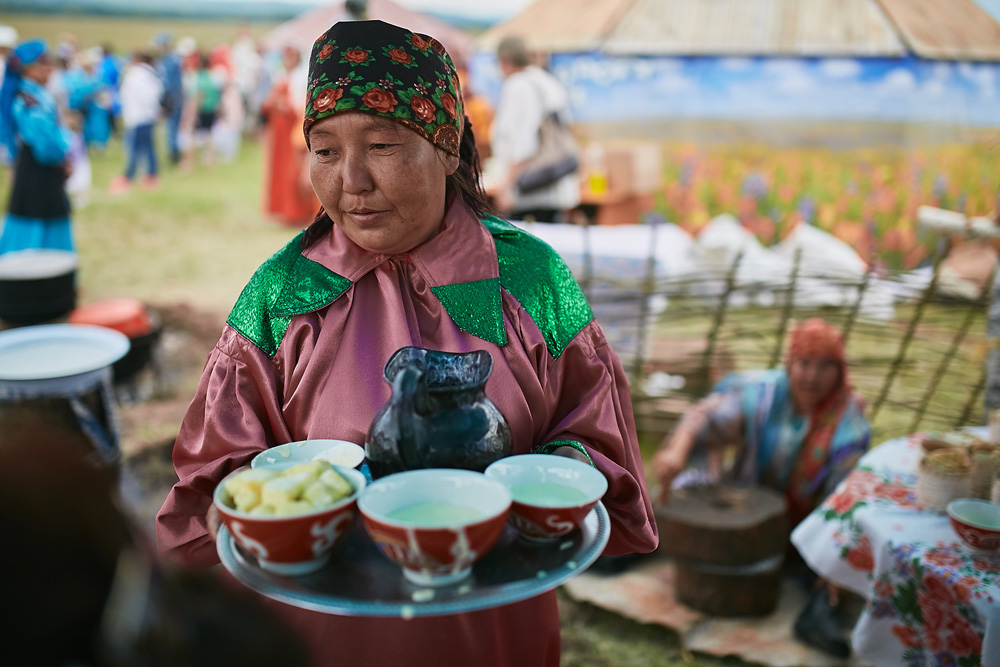 Source: Mikhail Maklakov
Source: Mikhail Maklakov
Local meat delicacies are definitely worth your attention, as Khakassia has been a land of livestock farmers over many centuries. Shops in Abakan sell khyyma, sausage from chopped beef and horsemeat, and if you eat out remember to order mun, boiled mutton with broth, or kyoptirges, an unsalted flatbread traditionally baked on stones in a yurt.
For a traditional Khakassian drink, you should try ayran.
"Ayran is the key to good health," say Khakassians.
Nomad-style tea with milk is not as popular here as in Tuva, but the locals often drink herbal infusions of black currant and lingonberry leaves, with rosehip and thyme, which is called "irben" in Khakassian. In the old days, such tea was served with oreme, boiled milk foam with ground bird cherries, which was prepared on special occasions. Oreme today is made from sour cream and is available also in local cafes.
All rights reserved by Rossiyskaya Gazeta.
Subscribe
to our newsletter!
Get the week's best stories straight to your inbox